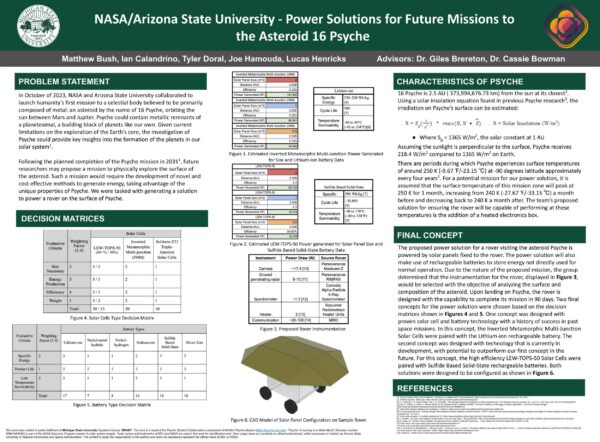Hypothesized Surface: Future Power Solutions for Exploring Hypothesized Surfaces – MSU – A
“Power Solutions for Future Missions to the Asteroid 16 Psyche”
INSTITUTION
Michigan State University (MSU)
CLASS
Tungsten Class (2023 – 2024)
STUDENT TEAM
ACADEMIC GUIDANCE
Dr. Giles Brereton
PROJECT DESCRIPTION
In October of 2023, NASA and Arizona State University collaborated to launch humanity’s first mission to a celestial body believed to be primarily composed of metal, rather than rock or ice: an asteroid by the name of 16 Psyche, or just Psyche, orbiting the sun between Mars and Jupiter. Previous observations indicate that Psyche could contain metallic remnants of a planetesimal, a building block of planets like Earth. Given current limitations on the exploration of the Earth’s core, the investigation of Psyche could provide key insights into the formation of the planets in our solar system.
Following the planned completion of the Psyche mission in 2031, future researchers may propose a mission to physically explore the surface of the asteroid. Such a mission would require the development of novel and cost-effective methods to generate energy, taking advantage of the unique properties of Psyche. Our project explored a possible solution to the problem, supported by data from previous NASA missions and research related to the asteroid.


